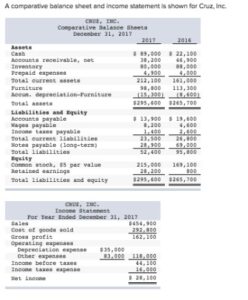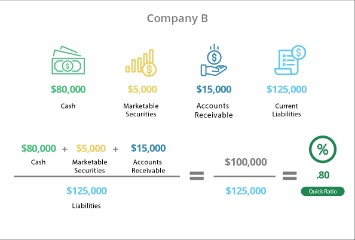
The company partners with FairPlay to embed fairness into its algorithmic decisions. AI assistants, such as chatbots, use AI to generate personalized financial advice and natural language processing to provide instant, self-help customer service. Zest AI is an AI-powered underwriting platform that helps companies assess borrowers with little to no credit information or history. If there’s one technology paying dividends for the financial sector, it’s artificial intelligence. AI has given the world of banking and finance new ways to meet the customer demands of smarter, safer and more convenient ways to access, spend, save and invest money.
- Today, companies are deploying AI-driven innovations to help them keep pace with constant change.
- Using predictive analytics, finance teams can forecast future cash flows using historical company data, as well as data from the broader industry.
- AI’s abilities around data management collection, analysis, and contextualization—just to name a few—help eliminate many of the decision-making roadblocks cited by business leaders.
- Making the right investments in this emerging tech could deliver strategic advantage and massive dividends.
How AI Is Transforming The Finance Industry

Operational efficiency is critical in the fast paced and competitive world on finance. Companies are continually looking for an edge and AI is proving an important tool. By leveraging AI capabilities, companies are seeing improvements double‐entry bookkeeping streamlining operations by automating routine tasks, reducing human error, and optimizing processes.
Companies Using AI in Cybersecurity and Fraud Detection for Banking
Using predictive analytics, finance teams can forecast future cash flows using historical company data, as well as data from the broader industry. While traditional financial forecasts must be manually adjusted when circumstances change, AI-driven forecasts can recalibrate based on new data, helping keep forecasts and plans relevant and accurate. double entry bookkeeping GenAI can even automatically create contextual commentary to explain forecasts produced by predictive models and highlight key factors driving the prediction.
Its solutions enable efficient close management, automated reconciliation workflows, unified compliance management and collaborative accounting operations. More than 2,800 companies use FloQast’s technology to improve productivity and accuracy. Kensho, an S&P Global company, created machine learning training and data analytics software that can assess thousands of datasets and documents. Traders with access to Kensho’s AI-powered database in the days following Brexit used the information to quickly predict an extended drop in the British pound, Forbes reported. AI has already brought significant changes to the finance function, and its impact is expected to keep growing.
For instance, finance teams are also deploying GenAI to make it easier to find information, fill knowledge gaps, and get work done. According to one 2023 study from Boston Consulting Group and MIT Sloan, GenAI improved a highly skilled worker’s performance by as much as 40% compared with workers who didn’t use it. A 2024 PwC report found that 60% of CEOs expect GenAI to create efficiency benefits. And a 2024 NVIDIA survey of 400 global financial services professionals found that “created operational efficiencies” was the AI benefit cited most often by those surveyed at 43%. Using predictive analytics and machine learning, companies accrual accounting vs cash accounting can automatically compile data from all relevant sources—historical and current—to continuously predict future cash flows.
Key insights
The use of AI, including Machine Learning (ML) and Generative AI (GenAI), is growing rapidly in finance, offering opportunities to boost efficiency and create value. However, its use in financial markets can increase risks and create new challenges for the global financial system. The OECD tracks and analyses AI developments and emerging risks and supports policy makers in understanding how AI works in finance and in sharing knowledge and experience on regulations and policies. The following companies are just a few examples of how artificial intelligence in finance is helping banking institutions improve predictions and manage risk.
AI and blockchain are both used across nearly all industries — but they work especially well together. AI’s ability to rapidly and comprehensively read and correlate data combined with blockchain’s digital recording capabilities allows for more transparency and enhanced security in finance. AI models executed on a blockchain can be used to execute payments or stock trades, resolve disputes or organize large datasets. The following companies are just a few examples of how AI-infused technology is helping financial institutions make better trades.
Many are looking toward GenAI and other AI applications to drive accuracy and speed in areas such as financial forecasting and planning, cash flow optimization, regulatory compliance, and more. Others are looking to more basic, but rapidly advancing, applications of AI, such as the automation of three-way matching in accounts payable, intercompany eliminations, and invoice capture. The top hurdles CFOs see to the adoption of GenAI are technical skills (65%) and fluency (53%). The use of AI in finance creates potential risks for institutions, including biased or flawed AI model results, data breaches, cyber-attacks and fraud, which can cause financial losses and reputational damages eroding consumer trust.
